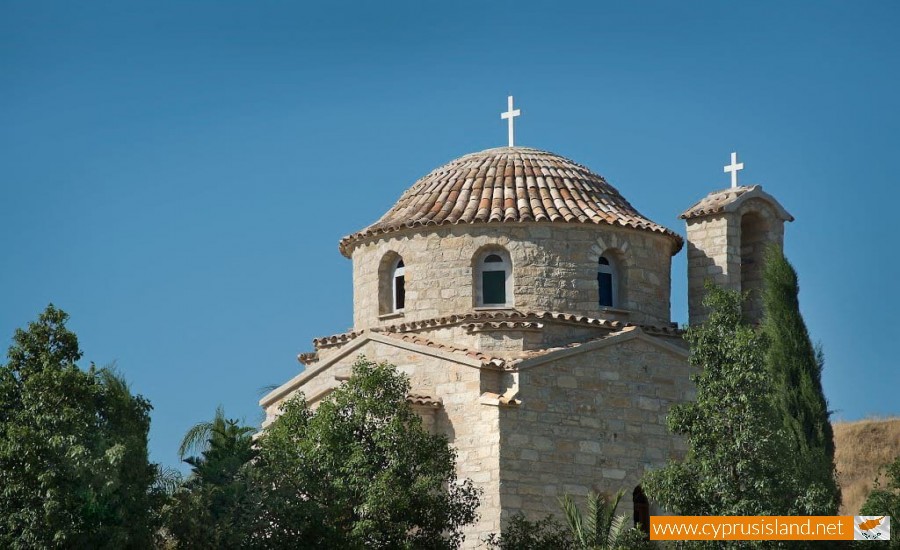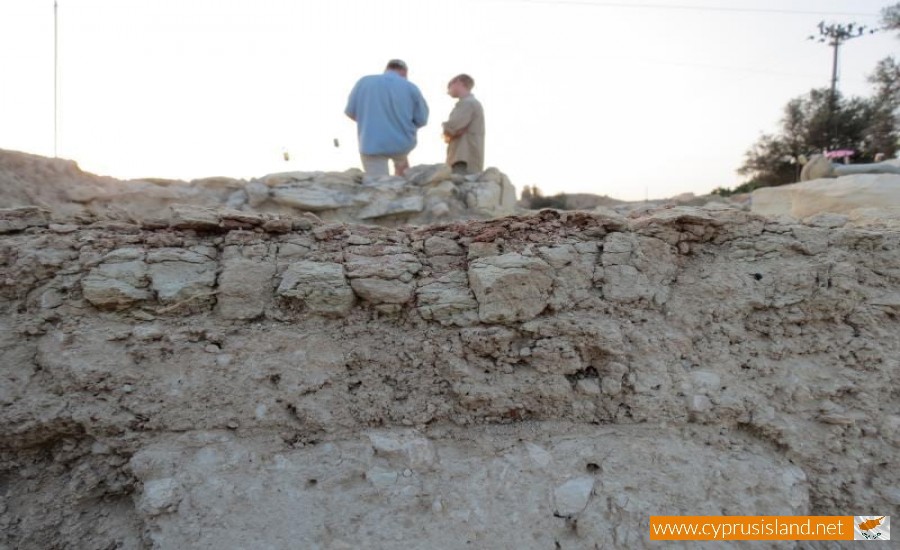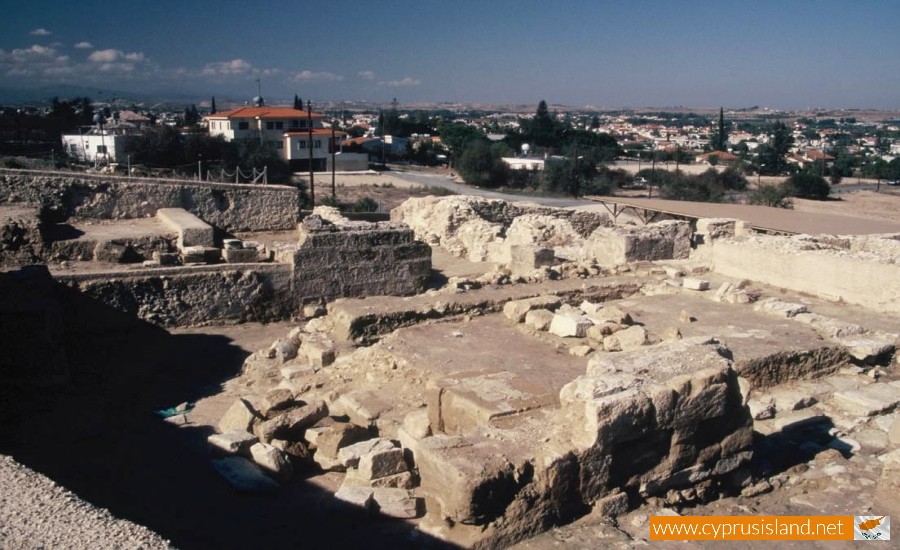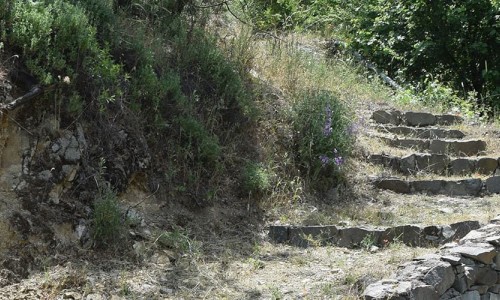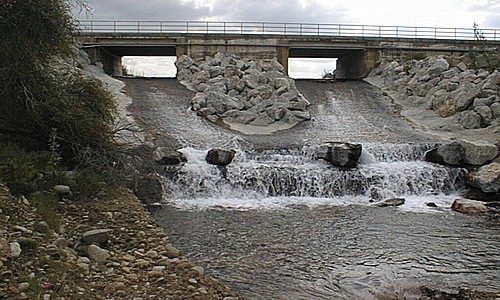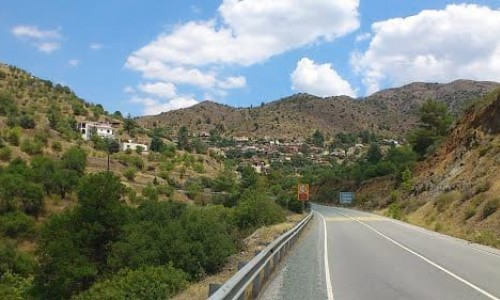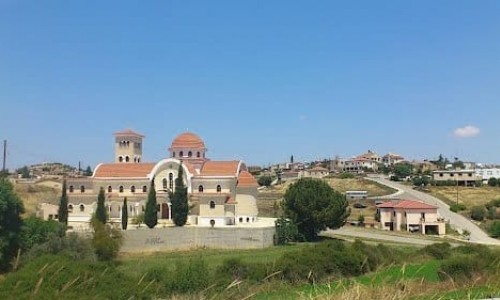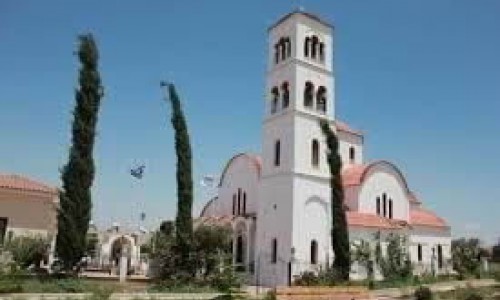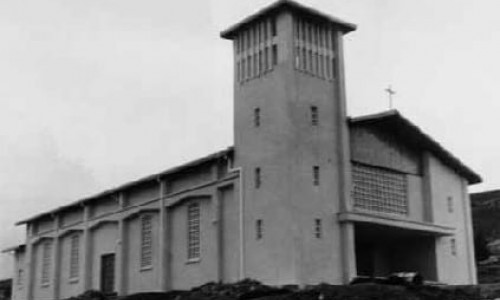Dali, Nicosia
Dali is a province of the Nicosia district and an independent municipality of Cyprus. It is located in the south part of the district. It is a modern community of the ancient town of Idalion.
Location
The Dali province is located in the district of Nicosia and is approximately in the middle of the island of Cyprus. It is 17 kilometres away from Nicosia. The centre of the village is between two small mountain ranges which surround the valley of the Yialia river.The village neighbours to the west with the village Pera Chorio-Nisou, to the north with the villages Potamia, Agios Sozomenos, Geri and Latsia. To the east it neighbours with the villages Louroutzina and Lymbia and to the south with the village Alambra. The second largest river in Cyprus is called Yialias and it crosses through the centre of the village.
Division
Due to its large extent, the village is divided into two large communities which are separate from each other. These are the communities of Panagia Evangelistria and Saints Konstantinou and Elenis. The first one is the community of the old village while the second is the modern extension of the village towards Nicosia. The community of Panagia Evangelistria has the oldest and southern part of the village, while the community of the Saints Konstantinou and Eleni have the newer northern part of the village. The names of each community come from the churches which they each have.
History
The village has a rich history which is dated back to the first Greek years and shows the long presence of the Greek element in Cyprus.
Foundation-Name
The history of the village begins at approximately 1100 B.C when the foundation of the Idalion kingdom was formed by the King Halkanora. According to the historian, King Halkanora was from the Pelloponisian town of Amikles near Sparta and after the Trojan War, he took an oath to build his town where the sun would shine. Therefore while he moved on to Cyprus with his army, one of the soldiers said “idou alion” which meant “I saw the sun” and that is how the town received the name Idalion.
Kingdom of Idalion
The kingdom of Idalion was one of the 11 ancient kingdoms of Cyprus and was built on the north slope of the small mountain range of Ierakarka. The extension of the kingdom included the surrounding villages which are today, and were used for agriculture, livestock and houses.
Monuments
There are many monuments in the village which witness its rich history. These are the ruins of the ancient town of Idalion and the old watermills near the church of Agios Dimitrianos in the area Agridi. Many archaeological findings such as baths, amphorae, statues, ancient tools, make up the rich history of the ancient kingdom. Many of these are in various museums in Cyprus as well as the British Museum. A number of findings is also on an exhibition in the local museum of Idalion which was built in 2007 near the archaeological area.
The Plaque of Onisilos
The plaque of Onisilos is a brass plaque of priceless value which was found in an archaeological excavation at the ruins of the kingdom. The context found on the plaque has an agreement made, which shows the submission of Idalion to Kition about 470 B.C. It is engraved in Cypro-syllabic writing, and was found over the west acropolis of the kingdom. The importance of this is extremely important as it the oldest written contract in the world. It should be mentioned that is icon has been adopted as an emblem by the department of antiquities in Cyprus.
Municipality of Dali
Until recently Dali was run by a community board, while in 1996 it became a municipality. The first mayor of Dali was Mr. Giannis Groutas. The mayors of Dali until today are the following:
- Giannis Groutas 1996-1997
- Dr. Nikos Nikolaou 1997-2006
- Leondios Kallenos 2006-Today
Religion
A number of churches and the long history of the village witness the spirituality of the people and offer information for the worship of God in the area.
Local Saints
According to written scripts, jewels, artefacts and verbal traditions there are at least two well-known saints which lived near the village. These are Agios Theodoros and Agios Dimitrianos the Andriotis.Both Saints seem to have lived in deserted places in the area.
Agios Theodoros seems to have been one of the threehundred Alamanon saints who came to Cyprus from Palestine. According to tradition he is the brother of Eftihios. Near the livestock area there is a cave in which the saint lived.
Agios Dimitrianos is believed to have lived during the 7th to 10th centuries and after serving as a soldier he served God near Dali. It seemed that he lived in the area of Agridi which is where a church is dedicated to his memory. The saint is celebrated on the 16th of August.
Churches
A variety of churches form the church history and decorate the spiritual richness of the village. The two larger churches are the Virgin Mary Evangelistria and Agioi Konstantinos and Eleni which are located in the provinces. The churches which are in the village are the following:
- Holly Metropolis Temple of Virgin Mary Evangelistria (1948)
- Holly Temple of Saints Konstantinou and Elenis
- Holly Temple of Agiou Dimitrianou Andridiotou (1317)
- Holly Temple of Agiou Mamantos (15th century )
- Holly Temple of Agios Theodoros (1994)
- Holly Temple of Agios Georgios (15th century)
- Holly Temple of Saints Andronikou and Athanasias (1841)
Education
Education in Dali began in 1858 when the first primary school was built in the village by the priest Chrysanthos. The first school was housed near the church of Agios Andronikos. In 1936 the building of the first primary school was built which operated as an all-girls school while the other one near the church of Agios Andronikos continued to operate as an all-boys school.
Today
Today there is an important number of education institutes in Dali which show the educational level of the citizens. There are three primary schools which operate, one lyceum and a number of preschool centres and kindergartens. The district gymnasium of Pera Chorio Nisou which was previously called District gymnasium of Nicosa had previously operated in Dali at the second primary school of Dali.
Services
There are many services in the village such as clinics, gyms, swimming pools, restaurants and many others. There is also the well-known Health Centre of Dali which provides services to the surrounding villages as well. Moreover there is an old people home, which is called Agios Dimitrianos near the Health Centre.
Occupations
Due to the morphology of the ground and the river Gialia , Dali has always been known as an agriculture province. Until the middle of the previous century most of the villagers dealt with agriculture, especially vineyards, citrus fruits, potatoes, cotton and wheat. Today people grown mostly wheat due to the fact that it is also used for livestock. Dali also have a large livestock production, which produced the largest percentage of milk in Cyprus.


